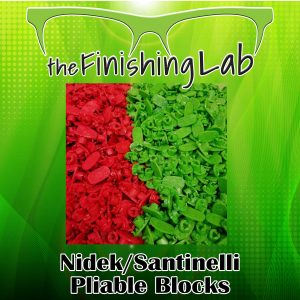The Correct Way Are The Lenses Of Spectacles Created
While spectacles have increasingly become a style statement, these humble companions will be the one object that many of us depend on each day for any very basic need. You will find today many types of frames and designs that is perhaps why we tend to look through the significance of lenses – the main element factor that makes spectacles what they are.
The convex lenses were the first ones to be made for stopping far-sightedness after which came the concave lenses to deal with short-sightedness. A lot goes into the making of lenses. Knowing more about how lenses are made may help eyewear users appreciate the stages associated with choosing the right spectacles. For instance, are you aware that it is very important choose your frames in accordance with your prescription? This is because, lenses are cut in accordance with the frames and certain prescriptions might not go well with small or thick frames. You can understand why and much more when you continue reading to discover how your prescription lenses are actually made.
Unprocessed trash
Previously, opticians trusted separate optical laboratories to generate lenses. These days, full-service outlets which make lenses for customers on the same place would be the norm. These outlets get plastic pieces that happen to be injection moulded and appear like hockey pucks.
The manufacturing technique of lenses involves several steps.
Surfacing and blocking
The laboratory technician inputs the optical prescription data into the computer and yes it supplies a print out in the information required for producing the specified prescription lenses. The following critical step is the place the technician marks the actual position of your respective pupils when you are wearing the glasses (not really fitted with all the corrected lenses). This is where a lensometer is used from the technician – to get the positioning.

Next, a lens lathe is utilized. A lathe is any mechanical device that is used to chop an item symmetrically. The lathe trims the lens from behind to get the desired thickness and precision.
Polishing
When it’s just from the lathe, the back of the lens is quite rough. Hence the technician places the lens inside a fining machine called a lap, which polishes it. First, each lens is rubbed against a rough fining pad manufactured from soft sandpaper. Then the laps are taken from each lens and soaked in warm water for a couple minutes. And then they may be attached to the lenses and put in the fining machine for polishing. Your machine then rotates the fining pad in the circular motion while a polishing compound operates in the lenses.
Edging
After polishing, the lens is a lot thinner than when it starts. However it still should be reduce with a smaller size. The lens is placed into a lens edger combined with the frame selected for this. The edger runs on the digital tracer to capture the three-dimensional image of the frame through by using a diamond cutting wheel, cuts the lens to the precise measurements supplied by the optician.
Coating
This is actually the final process in the event the lenses are dipped in to a tint container to be coated. Coating makes lenses resistant against scratching, anti-reflective or able to block Ultra violet rays. The lens usually receives as much as 16 ultrathin layers of metal oxide coatings. After drying, the lens is getting ready to be inserted in the desired frames.
In the whole production process these spectacle lenses undergo four basic inspections – three of these happening inside the laboratory along with the fourth one in the optical outlet. They include checking the optical prescription, verifying the optical centre placement, verifying the frame alignment and visually looking for scratches.
For more details about Out of Office Edger Refurbishment Service have a look at our new web site.
